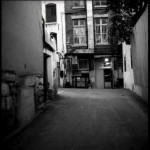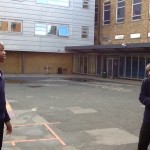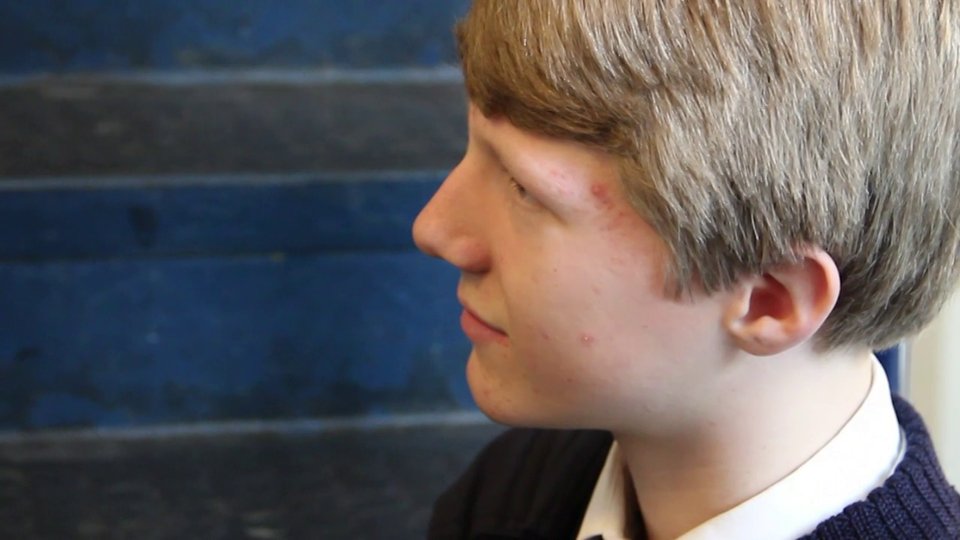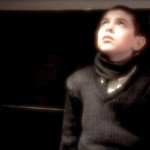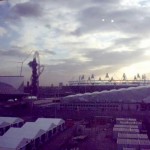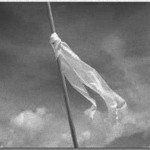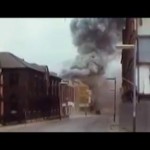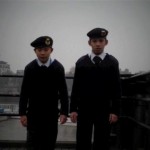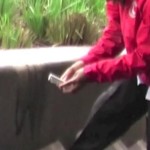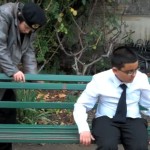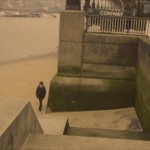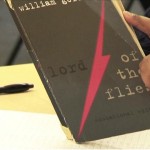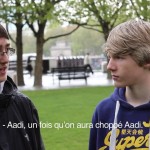This visualisation was created by Angus as part of his initial approach to the poem, “Belfast Confetti” by Cairan Carson.
The lesson materials surrounding this work can be found here: http://waugh11.www.edutronic.net/interpret-in-images/
As part of their Romeo and Juliet Project, these students re-enacted a scene from the play in a more, let’s say, contemporary, context.
These students are participating in a film-making programme established by the Cinémathèque Française in Paris called ‘Le Cinéma, cent ans de jeunesse’ (Cinema, 100 years young). These excerpts are samples of the “Film Exercises” the students complete as part of their investigation into a particular aspect of film theory. The boys also watch a wide range of films and clips as part of the process of building up to their “Final Film Essai” which is a short film that they take to the international festival held in Paris (Here is the film Essai from 2012)
This year the focus is on the Mis en Scene, so the excerpts you will see on Edutronic TV will all centre around the impact of the setting on the situation, and the effect of various changes in camera angle and position.
This film was produced in one day as part of the London Nautical School “Film in a Day” project. Using Samuel Taylor Coleridge’s “The Rime of the Ancient Mariner” as their stimulus, the boys filmed an interpretation on location in London’s atmospheric South Bank. The results speak for themselves…
This visualisation was created by Alex as part of his initial approach to the poem, “Come On, Come back” by Stevie Smith.
The lesson materials surrounding this work can be found here: http://waugh11.www.edutronic.net/interpret-in-images/
These students are participating in a film-making programme established by the Cinémathèque Française in Paris called ‘Le Cinéma, cent ans de jeunesse’ (Cinema, 100 years young). These excerpts are samples of the “Film Exercises” the students complete as part of their investigation into a particular aspect of film theory. The boys also watch a wide range of films and clips as part of the process of building up to their “Final Film Essai” which is a short film that they take to the international festival held in Paris (Here is the film Essai from 2012)
This year the focus is on the Mis en Scene, so the excerpts you will see on Edutronic TV will all centre around the impact of the setting on the situation, and the effect of various changes in camera angle and position.
As part of their Year 11 GCSE project exploring Shakespeare and the Literary Heritage, Mr Waugh’s class created, in conjunction with the Royal Shakespeare Company, The CLC and the British Film Institute, a short film based on an extract from the play Titus Andronicus. You can look at the lesson sequence on the Year 11 Class Site.
This visualisation was created by Kamrul as part of his initial approach to the poem, “Hawk Roosting”
The lesson materials surrounding this work can be found here: http://waugh11.www.edutronic.net/interpret-in-images/
As part of her class’ Romeo and Juliet Project, Emily made this filmed interpretation of a scene from Shakespeare’s Romeo and Juliet.
Have a look at other students’ interpretations
London Nautical School students reporting for BBC School Report on the topics of: The Olympics, Sailing, Reading, and the Arts.
This visualisation was created by Jack as part of his initial approach to the poem, “Flag” by John Agard.
The lesson materials surrounding this work can be found here: http://waugh11.www.edutronic.net/interpret-in-images/
As part of his class’ Romeo and Juliet Project, Hal made this filmed interpretation of a scene from Shakespeare’s Romeo and Juliet.
Have a look at other students’ interpretations
This visualisation was created by Soren as part of his initial approach to the poem, “Belfast Confetti” by Stevie Smith
The lesson materials surrounding this work can be found here: http://waugh11.www.edutronic.net/interpret-in-images/
The London Nautical School Film Club concentrated on the art of the long take this year and after 9 months of study, practice and development, created this short film ‘essai’, demonstrating what they’d learned. Let us know what you think.
This film was produced in one day as part of the London Nautical School “Film in a Day” project. Using Samuel Taylor Coleridge’s “The Rime of the Ancient Mariner” as their stimulus, the boys filmed an interpretation on location in London’s atmospheric South Bank. The results speak for themselves…
This film was produced in one day as part of the London Nautical School “Film in a Day” project. Using Samuel Taylor Coleridge’s “The Rime of the Ancient Mariner” as their stimulus, the boys filmed an interpretation on location in London’s atmospheric South Bank. The results speak for themselves…
As part of their class’ Romeo and Juliet Project, Peter and Arthur’s made this filmed interpretation of a scene from Shakespeare’s Romeo and Juliet.
Have a look at other students’ interpretations
This film was produced in one day as part of the London Nautical School “Film in a Day” project. Using Samuel Taylor Coleridge’s “The Rime of the Ancient Mariner” as their stimulus, the boys filmed an interpretation on location in London’s atmospheric South Bank. The results speak for themselves…
This film was produced in one day as part of the London Nautical School “Film in a Day” project. Using Samuel Taylor Coleridge’s “The Rime of the Ancient Mariner” as their stimulus, the boys filmed an interpretation on location in London’s atmospheric South Bank. The results speak for themselves…
Michelle Cannon, film in education theorist and researcher extraordinaire, put together this video capturing moments of the Film in a Day project – a collaboration between The London Nautical School, The Institute of Education and the British Film Institute. To see the films the boys made and their commentary, check their class site at nauticalf7.wordpress.com/ and to read more from a pedagogical point of view, Michelle’s site is a goldmine of reason and an exhortation to put these ideas into action:fashioningandflow.wordpress.com/
This film was produced in one day as part of the London Nautical School “Film in a Day” project. Using Samuel Taylor Coleridge’s “The Rime of the Ancient Mariner” as their stimulus, the boys filmed an interpretation on location in London’s atmospheric South Bank. The results speak for themselves…
The students were given 30 minutes to find a location, script and record a modern interpretation of a self-selected scene from Shakespeare’s Romeo and Juliet. This is what happened…
Find out more: http://waugh8.www.edutronic.net/category/shakespeare/
This film was produced in one day as part of the London Nautical School “Film in a Day” project. Using Samuel Taylor Coleridge’s “The Rime of the Ancient Mariner” as their stimulus, the boys filmed an interpretation on location in London’s atmospheric South Bank. The results speak for themselves…
This film was produced in one day as part of the London Nautical School “Film in a Day” project. Using Samuel Taylor Coleridge’s “The Rime of the Ancient Mariner” as their stimulus, the boys filmed an interpretation on location in London’s atmospheric South Bank. The results speak for themselves…
Completed in 30 minutes of class time, this documentary explores the ideas that Baz Luhrmann used to interpret the original script of Shakespeare’s Romeo and Juliet in his film Romeo + Juliet.
The class learning sequence this can be associated with can be found here: http://waugh8.www.edutronic.net/category/shakespeare/
This visualisation was created by Luke as part of his initial approach to the poem, “The Right Word” by Imtiaz Dharker
The lesson materials surrounding this work can be found here: http://waugh11.www.edutronic.net/interpret-in-images/
You can also hear the poem
The London Nautical School Film Club Final Film Essai, which they presented at the Cinematheque Francaise in Paris as part of their “Cinema, 100 Years Young” (Le Cinéma, cent ans de jeunesse) programme.
Produced by a group of students from the London Nautical school who are participating in a film-making programme established by the Cinémathèque Française in Paris called ‘Le Cinéma, cent ans de jeunesse’ (Cinema, 100 years young)
This film was conceived, written, performed, filmed and edited by students. There were adults around, we filled out the forms, kept the batteries charged, mediated the conversations and did the boring post production.
The film premiered in Paris on The 7th of June.

